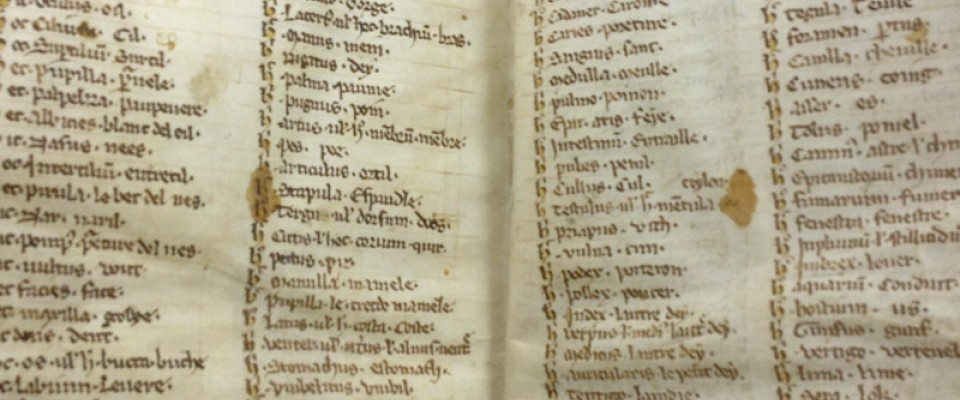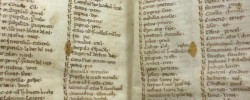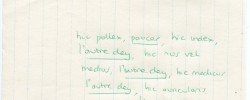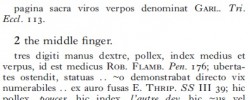As Latin was always a learned language in Britain, monolingual and bilingual word-lists were very necessary. A number of these survive, ranging from the eighth-century Latin/Old English glossary in MS Cambridge Corpus Christi College 144, carefully arranged alphbetically by the first two letters, to a number of fifteenth-century Latin/English glosses, one of which is illustrated by engagingly childish drawings (see ‘A 15th century Latin-English Vocabulary’). Some focus on one field – glossaries which match Latin and vernacular names of plants are especially common.
Some start from the vernacular, and translate into Latin, and one, Peter Levins’s Manipulus Vocabulorum, is a sixteenth-century rhyming dictionary, with English words grouped by alphabetical order of last syllables, with Latin equivalents for each word.
This thirteenth-century Latin/French word-list groups nouns by subject – such as parts of the house or, as here, parts of the body such as ‘verpus’; (middle finger), found in the left-hand column of the right-hand page, ten lines from the bottom.
The image is from Oxford, Bodleian Libraries, MS Douce 88, f. 148r (image © Bodleian Libraries, University of Oxford)







